SPE1.1.0.2
ADDITIONAL FUNCTIONS
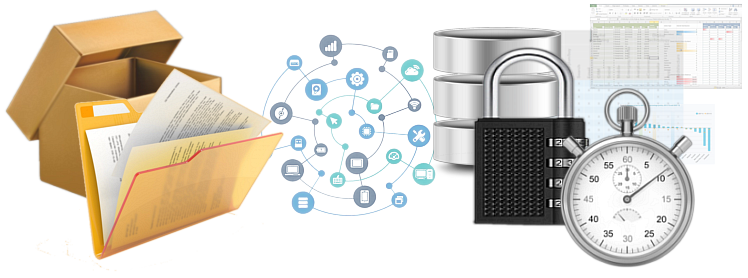
CONTENTS
- Encrypting the files in package
- Decrypting the files in package
- Export or import data storage
- Create an archive
ENCRYPTING THE FILES IN PACKAGE
The encryption of the files, the information about which is contained in the package, is a process in which the physical files are encrypted using cryptographic primitives common to the package.
In the standard versions of the application, the common cryptographic primitives include the following components:
- Cipher algorithm;
- Block cipher mode;
- Hash functions;
- Initialization vector (cipher IV);
- Hash salt etc.
The selection, testing and additional settings of the cryptographic cryptoprimitives is done in the dedicated application module. A description of the crypto primitives selection process and their subsequent verification can be found in the relevant section.

Fig.1. Encrypting the files in package.
Before starting the encryption process, you need to make sure that some or all files whose information is recorded in the package are not already encrypted by another mechanism. If this is done they need to be decrypted before any subsequent encryption is applied.
The reason for this is that with some crypto mechanisms, it is possible for files to be damaged if a sequence of several encryptions with different cryptographic primitives is applied to them.
This requirement not applies in case encryption is used as an auxiliary process in file destruction.
In this case, you can run multiple encryptions using different combinations of crypto primitives and randomly selected user passwords. This will ensure the irreversibility of the destruction.
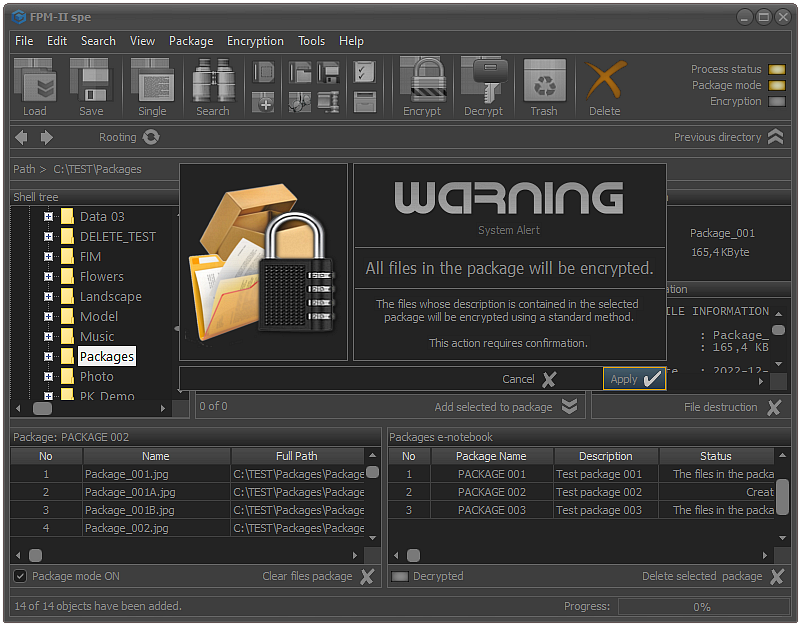
Fig.2. Start encryption procedure.
To start the encryption process, it is necessary to select Tools - Encrypt files in package from the main menu or use Alt+F9 keyboard shortcut.
In cases where standard or extended standard encryption mechanism is selected, the user password input module will be activated as shown in the image.
In the process of entering the password, the system performs an automatic assessment of its cryptoresistance, and the result is visualized in the upper right corner.
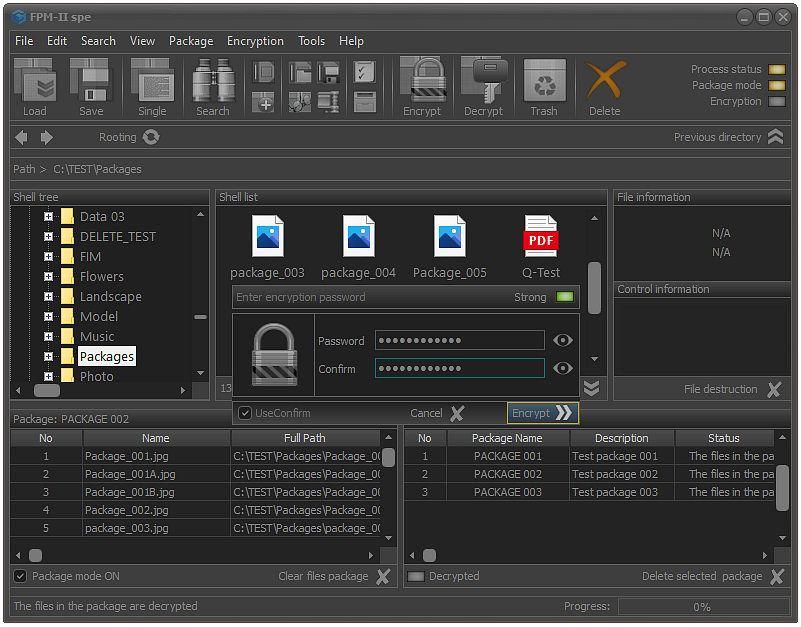
Fig.3. Entering a user password.
Entering a password is a mandatory condition for encryption to be performed, but is recommended in cases where security requirements are high.
After the password is entered, the application will display a message that all files whose description is contained in the file package will be encrypted. If this is confirmed, the encryption process will start.
As in all other cases, only those files to which the application has physical access will be processed (encrypted). If one of the records is missing, it will automatically go to the next one. The inability to encrypt (if found) will be reflected in the control report.
DECRYPTING THE FILES IN PACKAGE
The decryption of the files, the information about which is contained in the package, is a process in which the physical files are encrypted using cryptographic primitives common to the package.
The decryption of the files, the information about which is contained in the package, is a process in which the physical files are encrypted using cryptographic primitives common to the package.
The decryption process for all files whose information is recorded in the package is performed only and only using the combination of cryptographic primitives that was used for encryption. If this is not done, files may be irreversibly damaged.
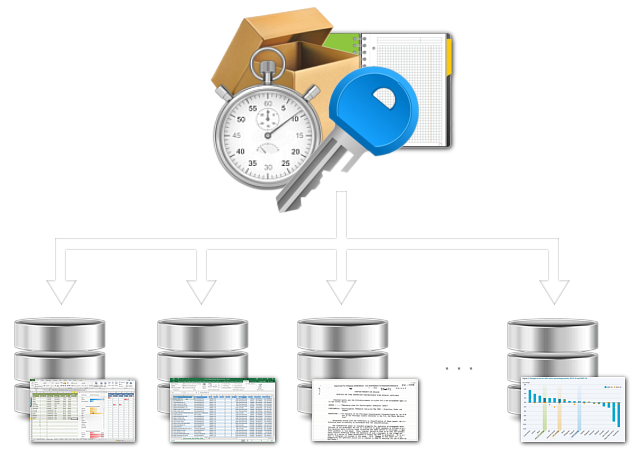
Fig.4. Decrypting the files in package.
If we want to restore the files to their original form, it is important before starting the decryption procedure to make sure that all files are encrypted with the same mechanism, for which the same set of cryptographic primitives is used, and that we have information about the components of the encryption mechanism.
Unlike all other checks, this one cannot be fully automated and requires strict adherence to established protocols.
To start the decryption process, it is necessary to select Tools - Decrypt files in package from the main menu or use Alt+F10 keyboard shortcut.
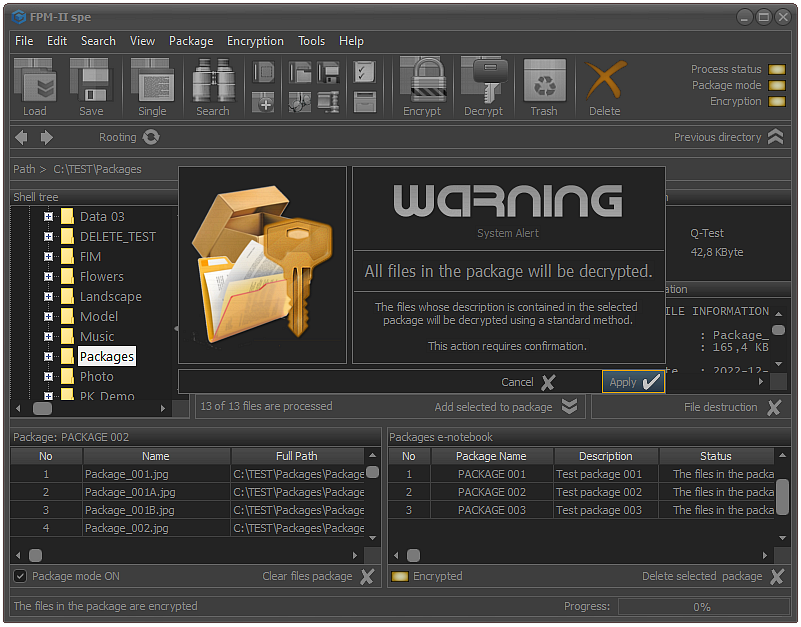
Fig.5. Start decryption procedure..
In cases where standard or extended standard encryption mechanism is selected, the user password input module will be activated as shown in the image.
The user password input module used for decryption is visually distinct from the one used for file encryption.
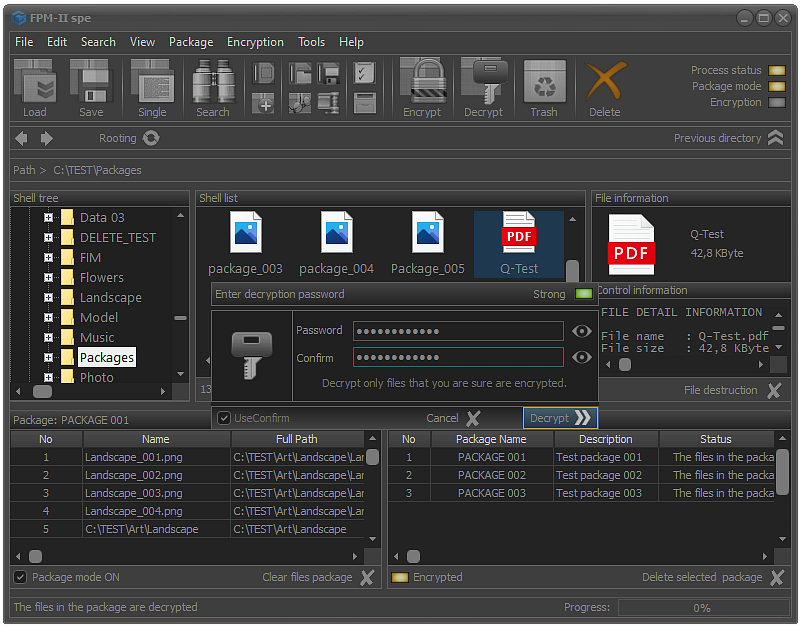
Fig.6. Enter a decryption password.
If a password was used in the encryption process, the same must be entered during decryption. If this is not done and/or the password differs from the one used for encryption, the files will be irreversibly damaged.
Confirmation of the entered password is carried out either by clicking on the corresponding button or by pressing the Enter key.
As with encryption, here, before starting the decryption process, the utility will display a message that all files for which there is information in the package will be decrypted. The user can confirm or reject the execution of the process, at his own discretion.
EXPORT OR IMPORT DATA STORAGES
The export and import of data storiges is used in cases where there is a need to transfer electronic notebooks and file packages to another device. Also, these features can be used to create backups, templates, and any enterprise solutions that require cloning of working models.
Unlike file package export, data storiges export exports an electronic notebook, along with all packages included in it.
In this case, the working directories that the application uses by default are also replaced, unless otherwise specified.

Fig.7. Export/Import data storage.
The application allows exporting the data storiges to local spreadsheets in the following format:
- File Package Metadata (*.fpd);
- File Package Information (*.fpi);
- Binary File (*.fds);
- Local Database File (*.fdb);
- Associated Database (*.adb);
- Client Data Set Table (*.cds);
- JavaScript Object Notation (*.json);
- Extensible Markup Language (*.xml) etc.
Note: By default, file packages are exported in File Package Metadata (*.fpd) format.
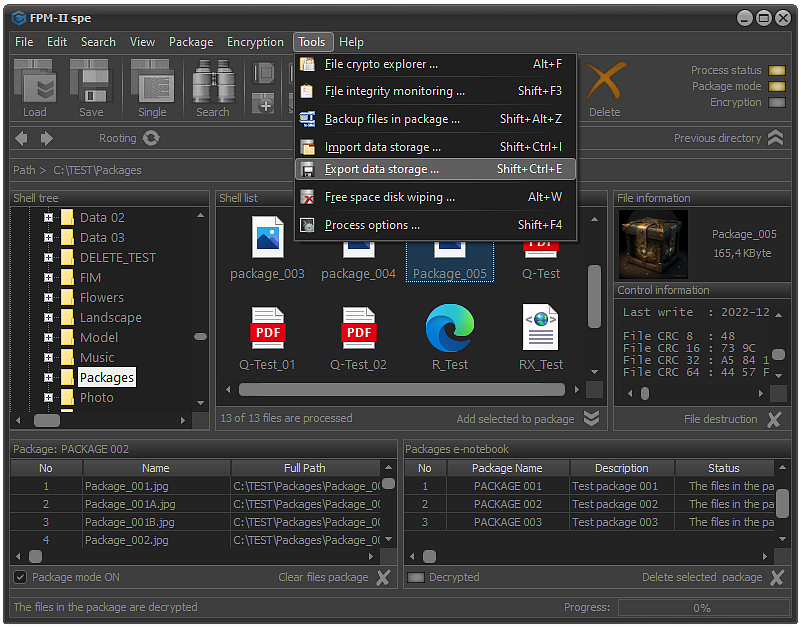
Fig.8. Export data storage.
To start export data storage process, it is necessary to select Tools - Export data storage from the main menu or use Shift+Ctrl+E keyboard shortcut.
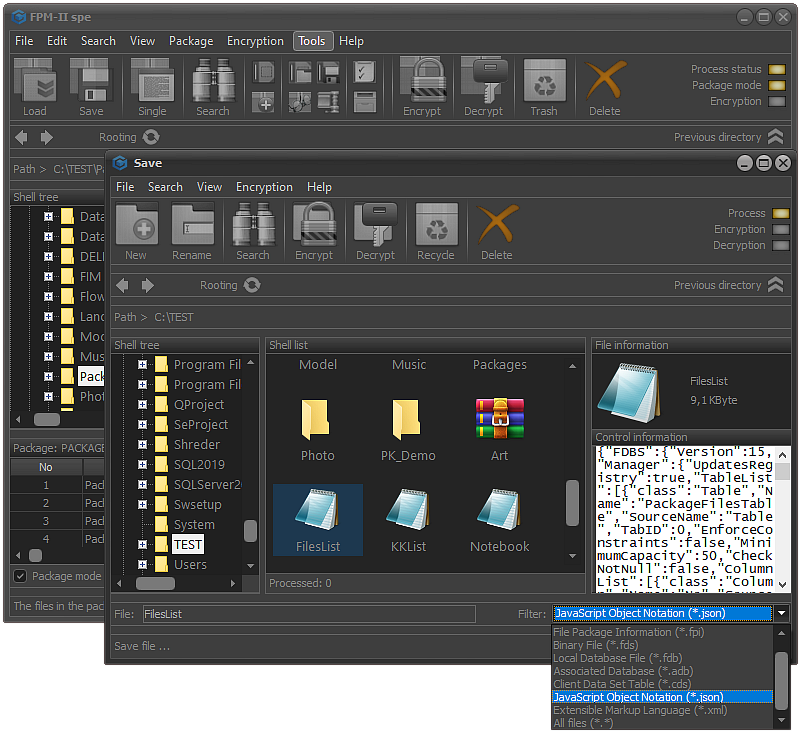
Fig.9. Import data storage as JSON.
To start import data storage process - select Tools - Import data storage from the main menu or use Shift+Ctrl+I keyboard shortcut.
CREATE AN ARCHIVE
Creating an archive of the files whose description is stored in the work package allows backups to be created before crypto or irreversible destructive processes are performed.
All files whose meta information is recorded in the current package and which are physically accessible will be added to the archive.
The speed of the process in this case depends on the total length of the files, as well as on the type of device on which the archive will be physically stored.
Although using standard archives is a good solution, Black Screen security protocols recommend using secure file containers. In corporate versions, this is a mandatory condition, and in special file containers, they use hybrid protection and dynamic generation of secret keys, which contributes to increasing the overall security.
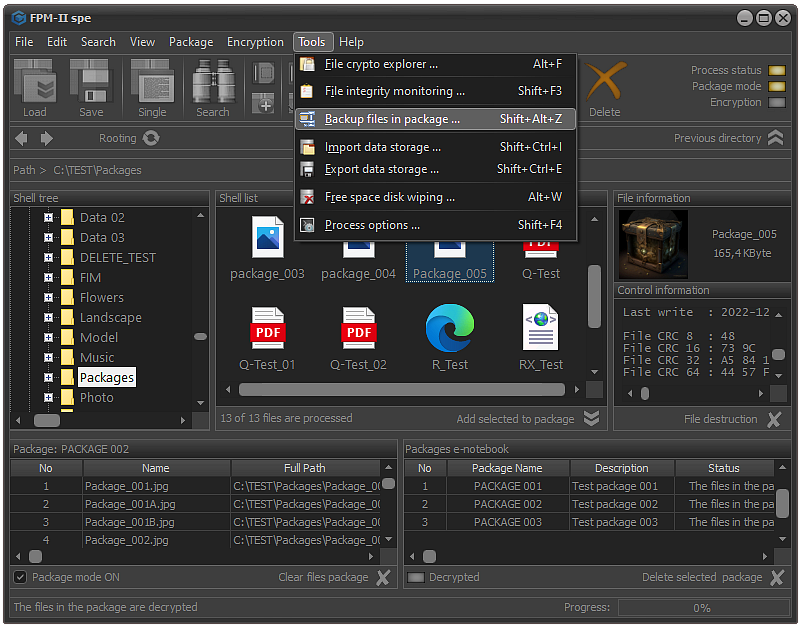
Fig.10. Backup files in selected packages.
To start backup process, it is necessary to select Tools - Backup filen in package from the main menu or use Shift+Alt+Z keyboard shortcut.
After starting the file manager, you need to choose a location where the archive will be stored and set a name. After confirmation of the selection, all files for which there is information in the package and which are physically accessible will be added to the archive.
< Previous Contents